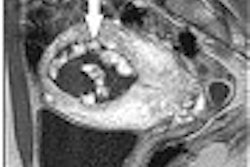Thieme, New York, 2003, $105/year for physicians; $69/year for residents
These seminars are a useful reference for practicing radiologists and radiologists-in- training. They also would be a handy reference for specialists in pediatrics, gynecology, and orthopedics.
Part 1 begins with an elaborate description of vitamin D metabolism and the pathophysiology of rickets and osteomalacia, as well as the genetic causes of these conditions. The second article discusses the types, causes and biochemical findings in rickets in childhood with a relatively brief description of the radiologic findings. The role and limitations of bone densitometry in children is discussed in a separate chapter, with careful consideration given to the difference between pediatric and adult imaging in this patient population.
The next article deals with the rare and difficult oncogenic rickets, the pathophysiology of this paraneoplastic syndrome, and the role of the imaging in diagnosis.
The next topic is osteoporosis and there are lucid descriptions of diagnosis and monitoring with bone densitometry, quantitative CT, and quantitative ultrasound.
There are also chapters devoted to the spine, including the utility of vertebroplasty in osteoporotic vertebral collapse. A particularly interesting article describes exciting radiographic, CT, and MRI techniques for imaging trabecular bone structures.
Part 2 begins with an in-depth review of Albright’s hereditary osteodystrophy and pseudohypoparathyroidism, describing the clinical features and classification of these diseases. Other conditions associated with GANS 1 mutation have also been described.
The next article is on drug-induced metabolic bone diseases and includes a comprehensive list of the various drugs that cause bone disorders. A section on drug-related fetal bone disorders is especially useful.
Dr. Dennis Stoker has provided a detailed description of osteopetrosis including its evolving classification and radiologic findings. The next article elaborates the clinical and imaging findings in idiopathic hyperphosphatasia, its differential diagnosis, and molecular genetics of this rare disease.
The seminar come to a close with sections on Paget’s disease; an elaborate description of tumoral calcinosis and its pathophysiology; a chapter on the value of nuclear medicine; and a brief description of metabolic bone diseases in animals.
On the whole, Imaging in Metabolic Bone Disease provides in-depth coverage of these diseases. What it lacks is a discussion of the parathyroid glands as well as enough images -- the number of illustrations is adequate if limited.
By Dr. Uday D. PatilAuntMinnie.com contributing writer
August 1, 2003
Dr. Patil is a consultant radiologist at Manipal Hospital and Manipal Academy of Higher Education in Bangalore, India.
If you are interested in reviewing a book, let us know at [email protected].
The opinions expressed in this review are those of the author, and do not necessarily reflect the views of AuntMinnie.com.
Copyright © 2003 AuntMinnie.com



















